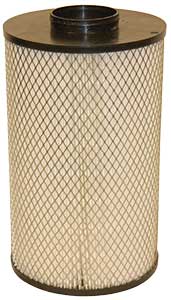Understanding MERV Ratings For Air Filters
Taking the Confusion Out of Air Filter Efficiency or What Do They Really Mean When They Say That?
I will try to keep this simple and short so as not to add to some of the confusion over air filter efficiencies. First, I would like to point out that any company that sells an air filter that states an efficiency rating without basing it on a particle size is providing you with basically useless information. For example: an air filter that has a statement reading “this filter will remove up to 95% of all airborne contaminants in your home or office”, doesn’t really tell you anything. Since most of the respirable particles that actually are harmful are usually less than 2 microns in size, don’t you think it would be important to tell you what size particles they actually remove from the air? So, let’s look at this statement again. “95% of all airborne contaminants” sounds pretty good, doesn’t it? Our HEPA air filters remove 99.97% of all airborne contaminants at 0.3 microns and smaller. At first glance these two air filters look similar in capability. But the first air filter provides no particle size range or efficiency based on particle size.
Recently the American Society of Heating Refrigeration and Air Conditioning Engineers (ASHRAE) and the air filter industry have come up with a standardized rating system, based on the European concept, of a MERV rating for each type of air filter. This numbering system makes it easier to evaluate and compare mechanical air filters and will hopefully eliminate some of the confusion regarding the overall effectiveness of any type of a mechanical air filter on removing airborne particulates, especially those that are less than 2 microns in size.
Bbelow you will see the new MERV ratings. This MERV rating chart has the MERV ratings, 1-16 on the left hand column and then there are five other columns showing the average efficiency in microns, average arrestance and the final resistance as measured in inches of water. Most companies that make air filters are now using this MERV rating, so you will see a MERV number on the air filter and perhaps some rated efficiency.
Comparing Various Air Filters to MERV Ratings
- Throw-Away Fiberglass Media MERV 1 -MERV 4
- Pleated Media Air Filters 30% ASHRAE MERV 10 – MERV 11
- Pleated Media Air Filters 65% ASHRAE MERV 13 *
- (* 65% ASHRAE is about 20% effective on less than 1 micron particles)
- Pleated Media Air Filters 95% ASHRAE MERV 14
Some of the man-made synthetic media like that used in the 3M Filtrete air filters may be rated MERV 15. However, they hold very little dust and load up quickly and have a relatively high-pressure drop (static pressure) and can affect the performance of the heating / cooling system.
MERV Ratings Comparison Chart
RESPA Air Filter Efficiency – MERV Rating Chart
 |
IMPORTANT NOTES:It is important that you select the RESPA Filter that best fits your application.MERV is an acronym for “Minimum Efficiency Reporting Value”. The MERV rating on an air filter describes its efficiency as a means of reducing the level of 3 to 10 micron-sized particles in air which passes through the filter. Higher “MERV” means higher filter efficiency. The purpose of the MERV standard is to permit an “apples to apples” comparison of the filtering efficiency of various air filters. <Read more about MERV and HEPA filter ratings>HEPA air filters are not MERV rated as they exceed the ASHRAE test protocol 52.2 used in determining the MERV ratings. In fact, HEPA air filters are the ONLY mechanical air filters that are tested and certified to meet a specific efficiency at a specific particle size. All HEPA air filters must meet a minimum efficiency of 99.97% at 0.3 microns. <Read more about MERV and HEPA filter ratings>
Comparison of EU Standards to ASHRAE 52.1, 52.2 (MERV Ratings) >> Go to RESPA-SD Product Information |
||||||||||||||||||||||||||||||||||||||||||||||||||||||||||||||||||||||||||||||||||||||||||||||||||||||||||||||||||||||||||||||||||||||||||||||||||||||||||||||||||||||||||||||||||
|
|||||||||||||||||||||||||||||||||||||||||||||||||||||||||||||||||||||||||||||||||||||||||||||||||||||||||||||||||||||||||||||||||||||||||||||||||||||||||||||||||||||||||||||||||||
This is an important chart to keep for future reference in determining the best filter style and type for your specific application. Understand that the higher the MERV rating the greater the resistance or static pressure will be across the filter media. For most HVAC furnace filter applications a MERV 8 and lower since these filters will allow for lower resistance with good filtration of larger particles. Using the 3M type filtrete filter not recommended for most general duty residential heating/cooling systems. These filters load up very quickly and will actually reduce the HVAC fan performance requiring longer cycles to both heat and cool your home.
Pure Air Systems has been manufacturing commercial grade HEPA and Carbon based air filtration systems since 1985. These units are designed to be used either attached to existing ducted HVAC systems or as stand-alone units. The ability to use a true HEPA filter system ( which would have a MERV rating of 18 if they rated them) in a residential application makes these unit unique in the filter market.
For more information on the complete line of HEPA and Carbon based air filtration systems please go to our website at: www.pureairsystems.com or follow us on Twitter @pureairsystems and like us on Facebook. Of course you can always call us on our toll-free number at: 800-869-8025.
